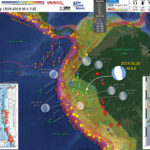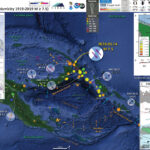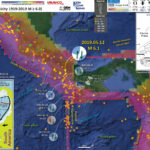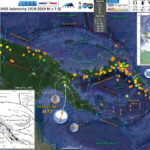Just a moment ago, there was an intermediate depth Great Earthquake (magnitude M≥8.0) beneath Peru. I was heading to bed at about 1:10 local time (Sacramento, CA) when I noticed a tweet from Dr. Anthony Lomax (presenting his first motion…
Earthquake Report: New Ireland
This region of Earth is one of the most seismically active in the past decade plus. This morning, as I was preparing for work, I got an email notifying me of an earthquake with a magnitude M = 7.5 located…
Earthquake Report: Panamá
There was just now an earthquake beneath Panamá. The major plate boundary in the region is a subduction zone (convergent plate boundary) where the Cocos and Nazca plates dive northwards beneath the Caribbean plate forming the Middle America trench (MAT).…
Earthquake Report: Papua New Guinea
Earlier today, there was an intermediate depth beneath eastern Papua New Guinea (PNG). With a magnitude M = 7.2, this is one of the largest earthquake so far in 2019. Here is the USGS website for this earthquake. Today’s earthquake…




